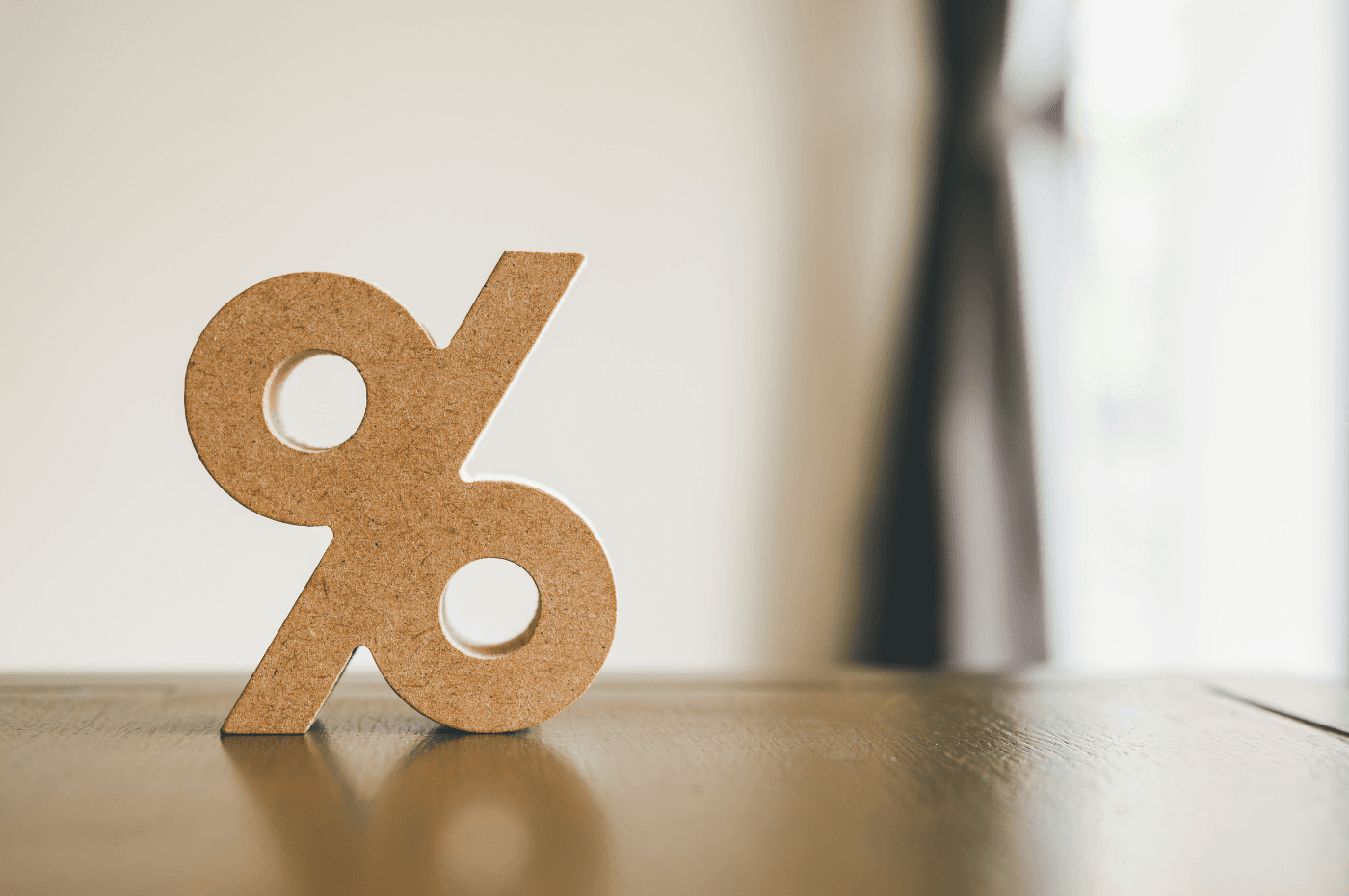Navigating the world of mortgages can be complicated, especially for first-time homebuyers. With terms like mortgage loan, closed, open, fixed, variable-rate mortgages, collateral mortgages, and mortgage loan insurance, it’s easy to feel overwhelmed.
XpertSource.com is dedicated to supporting real estate buyers and owners by connecting them with our vast network of professionals. When you share your project with us, you can rest assured that we’ll connect you with qualified experts who will guide you through every step of your journey.
That’s why we’ve created this straightforward yet comprehensive guide. Here, you’ll find all the essential information you need to smoothly navigate the process of securing or renewing your mortgage. Let’s dive in!
Access the PDF version of this article.

The role of the mortgage broker
Many people mistakenly think that working with a mortgage broker is no more beneficial than searching for a mortgage on their own. However, a mortgage broker can provide invaluable assistance and guidance in selecting the right mortgage for your needs.
Unlike a mortgage advisor who is tied to a single bank, a mortgage broker acts as an intermediary between you and a variety of lenders, including both financial institutions and private lenders. Their primary goal is to help you find the best financing solution for your real estate project.
A mortgage broker will take the time to assess your financial situation and explore the mortgage products offered by different lenders, ensuring they find the option that best suits you.
Did you know that using a mortgage broker won’t cost you a thing? That’s right; their services are completely free!
Indeed, their mortgage brokers are compensated through commissions paid by financial institutions when they successfully match a client with a mortgage. Their earnings are directly tied to their productivity and the effort they put into their work. Since the commission rates are generally similar across lenders, you can trust that a mortgage broker is focused solely on your best interests.
Here are some key advantages of working with a mortgage broker:
- They explain the mortgage process clearly.
- They help you save both time and money.
- They protect your credit report.
- They negotiate on your behalf.
- They handle all the paperwork.
- They guide you to the best financial institution based on your financial profile.
What do you need to know before choosing your mortgage?
Before selecting a mortgage, there are several important factors to consider. Here are the key points to keep in mind.
The documents you need
To help your mortgage broker prepare your file, you’ll need several key documents. While they provide you a detailed list, you can get a head start by gathering some documents in advance.
The required documentation may vary based on your specific situation whether you’re applying for your first mortgage, renewing an existing one, or if you’re employed versus self-employed. Here are some common documents to consider preparing:
- For employees: notice of assessment from both the federal and provincial governments for the last two years, T4 slip, most recent pay statement and letter of employment.
- For self-employed workers: Tax assessment from both the federal and provincial governments for the last two years, latest tax return (including appendices for income and expenses) and company financial statements.
- For ongoing purchases: promise to purchase and its annexes, property description, municipal and school tax invoices, documentation supporting your down payment source and certificate of conformity for the well and septic tank if applicable.
- For construction or self-construction: offer to purchase the land, plan and specifications and copy of the building permit.
- For renewal: property tax accounts, copy of the current mortgage deed and recent mortgage statement.

Your credit report
Having a strong credit history is essential when applying for a mortgage. A higher credit score gives you more leverage in negotiating favourable loan terms with your lender.
Your credit report provides a comprehensive overview of your financial situation, including your debt levels and repayment habits. It essentially serves as a portrait of your creditworthiness.
In Canada, Equifax and TransUnion are the two main agencies responsible for managing credit reports. They continuously receive information from your creditors to generate a score that reflects your reliability as a borrower. This score ranges from 300 to 900 points:
- A score of 579 or less is considered very low.
- A score of 580 to 679 is considered low.
- A score of 679 to 719 is considered average.
- A score of 720 to 779 is considered very good.
- A score of 780 or more is considered excellent.
It can be challenging for individuals with a credit score of 650 or lower to secure a mortgage. Even if they do manage to get approved, the interest rates offered may be significantly higher than average to compensate for the increased risk to the lender.
In addition to your credit score, you also receive a rating that evaluates how you manage your credit. This rating typically consists of the letter R followed by a number between 1 and 9, reflecting your payment history. As R1 rating means you pay your bills on time, while an R9 rating is usually associated with bankruptcy.
Before beginning the mortgage application process, it’s essential to ensure you have a solid financial history. Pay off any debt that could negatively impact your credit score and avoid taking on new debt. Now is not the time to buy that new car!
Mortgage loans and bankruptcy
If you’ve declared bankruptcy in the past, it will remain on your credit report for 6 to 7 years. However, it is still possible to obtain a mortgage if you meet certain conditions:
1. You must have taken steps to rebuild your credit after filing for bankruptcy.
2. You can apply for a mortgage two years after your bankruptcy discharge (two years after you’ve repaid your debts).
3. The lender you apply to should not have been affected by your bankruptcy.
4. Ideally, your down payment should come from personal savings. Be aware that the lender may require a down payment greater than 5%.
Even if you meet all these criteria, a financial institution still has the discretion to deny your loan application.
Wow to improve your credit report?
Improving your credit takes time and commitment; it’s a gradual process that can span several years. Here are some steps you can take to enhance your credit report:
- Communicate with creditors: Reach out to your creditors, explain your situation, and negotiate a realistic payment plan.
- Reduce credit cards: if you have multiple credit cards, consider closing some, but try to keep your oldest accounts to maintain your credit history.
- Pay bills on time: make it a priority to pay your bills before their due dates.
- Meet minimum payments: always pay at least the minimum amount on your credit cards each month. If possible, pay extra.
- Diversify your credit types: a mix of different types of credit, when managed responsibly, can positively impact your creditworthiness.
- Limit credit utilization: aim to use no more than 35% of your available credit to keep utilization rates low.
- Minimize credit inquiries: be cautious about applying for new credit. Multiple inquiries in a short period can signal to lenders that you may be struggling financially.
Please note that your assets, savings, and RRSPs aren’t reflected in your credit report, but they can help you secure better borrowing terms.

The down payment
In Quebec, a down payment is essential for securing a mortgage loan. Without meeting the minimum down payment requirement, obtaining a mortgage isn’t possible.
Typically, the down payment is at least 5% of the property’s purchase price. However, this percentage increases for higher-value homes:
- For properties priced over $500,000, the down payment rises to 10%.
- For properties priced over $1 million, a 20% down payment is required.
Fortunately, there are various options to help you gather the necessary funds for your down payment, allowing you to explore both traditional and non-traditional sources for refinancing your purchase.
Traditional down payments sources
- Personal savings: funds must be in your bank account for at least 90 days.
- RRSP withdrawal: you can use the Home Buyers Plan (HBP) to withdraw from your Registered Retirement Savings Plan (RRSP).
- Inheritance: money received from an inheritance can contribute to your down payment.
- Property sale proceeds: funds gained from selling a property can be used.
- Non-refundable gifts: financial support from close relatives that doesn’t need to be repaid.
Non-traditional down payments sources
- Personal bank loan: borrowing from a bank.
- Credit card: using credit card funds.
- Personal line of credit: accessing funds from a line of credit.
- Loan from a friend or relative: a repayable loan from someone close to you.
Keep in mind that utilizing these non-traditional sources can negatively impact your debt ratios. This may complicate your mortgage application process and, in some cases, could hinder your ability to proceed with your home purchase.
Good to know:
There are many homeownership programs available from the federal and provincial governments, as well as some larger cities like Montréal, City of Quebec, and Sherbrooke. Some of these programs offer interest-free loans that can assist you in boosting your down payment, making ownership more accessible.
Down payment calculation
The table below outlines how the minimum down payment is determined based on the property’s purchase price:
| Property purchase price | Minimum % for down payment | Down payment amount |
| $350 000 | 5% | $350 000 x 5% = $17 500 |
| $500 000 | 5% | $500 000 x 5% = $25 000 |
| $650 000 |
5% on the first $ 500,000 10% on the rest |
$500 000 x 5% = $25 000 $150 000 x 10% = $15 000 $25 000 + 15 000 = $40 000 |
| $1 000 000 | 20% | $1 000 000 x 20 % = $200 000 |
Also note that you can certainly make a down payment greater than the minimum required percentage. For example, offering a 20% down payment on a $350,000 home is entirely possible. A larger down payment means a smaller mortgage, which can save you thousands of dollars in interest over time!
It’s also important to remember that a 5% down payment may not cover all expenses related to purchasing a property. Most banks recommend having an additional 1.5% on hand for closing costs. Therefore, it’s wise to budget at least 6,5% of the purchase price.
Additionally, if your down payment is less than 20%, the lender will require mortgage loan insurance. Let’s see what that entails.

Mortgage loan insurance
If your loan amount exceeds 80% of the property’s purchase price, you’ll be required to obtain a mortgage loan insurance. In some cases, such as if you’re self-employed, you may need this insurance even if your down payment is more than 20%.
It is important to note that mortgage loan insurance does not protect you; instead, it protects your lender in the event of a payment default on your part.
How much does mortgage loan insurance cost?
To obtain a mortgage loan insurance, you’ll need to pay a fee known as a premium. These premiums typically range from 0,6% to 4% of your mortgage amount and are calculated based on your down payment. Generally, the higher your down payment, the lower your insurance premium will be.
| Ratio of the loan to the value of the house | Premium applying to the loan amount |
| 65% or less | 0,60% |
| 75% or less | 1,70% |
| 80% or less | 2,40% |
| 85% or less | 2,80% |
| 90% or less | 3,10% |
| 95% or less | 4% |
How to pay your mortgage loan insurance premium?
You have two options for paying your mortgage loan insurance premium: you can either pay it as a lump sum or add it to your mortgage. Keep in mind that if you choose to add it to your loan, you’ll pay interest on it.
Good to know:
When obtaining a mortgage, some banks offer clients the option to purchase mortgage life insurance, which covers the outstanding balance of a mortgage. This coverage protects your loved ones in case of death or disability.
Unlike mortgage loan insurance, mortgage life insurance is optional, and you are not obligated to accept the policy offered by your lender. If you’re considering this protection, it’s wise to compare several insurance policies to find the best fit for your needs.
Associated costs with real estate transaction
Most first-time homebuyers often underestimate the various fees associated in a real estate transaction. It’s essential to budget not only for the down payment but also for additional expenses. Generally, you should have about 1.5% more cash set aside to cover these associated costs, ensuring a smooth purchasing experience.
As previously mentioned, if your down payment is less than 20%, you’ll need to account for mortgage loan insurance premiums. Additionally, here are other costs you should consider:
- Notary fees
- Evaluation fees
- Credit file study fees
- Administrative costs
- Pre-purchase inspection
- Moving costs
- GST and QST (applicable only for new homes)
- Property transfer taxes (also known as the welcome tax)
- Municipal and school taxes
- Potential renovations

Mortgage pre-approval
Mortgage pre-approval is the process of determining which financial institutions are willing to support your real estate purchase. It provides insight into the amount of mortgage you may qualify for, helping you understand the maximum investment you can make in your future home. This crucial step guides your property search and ensure you remain within your budget.
Getting a mortgage pre-approval in 5 steps
1. Choose your approach: decide whether to handle the process yourself or enlist the help of a mortgage broker. Keep in mind that doing it on your own might negatively impact your credit report.
2. Complete the application: fill out the application form provided by your broker or financial institution. You’ll need to supply information regarding your identity, credit rating, financial situation, and down payment.
3. Calculate your debt ratios: assess your debt ratio and repayment capacity using the Gross Debt Service (GDS) and Total Debt Service (TDS) calculations.
4. Confirm your borrowing capacity: verify your borrowing potential with your broker or financial institution and submit your mortgage request.
5. Obtain pre-approval: once your request is submitted, you’ll receive a mortgage pre-approval. However, keep in mind that this does not guarantee final approval; your application could still be declined later in the process.
The GDS ans TDS debt ratios
The Gross Debt Service (GDS) and Total Debt Service (TDS) ratios are key components for mortgage pre-approval, as they help assess your ability to repay a loan. Generally, lenders look for a maximum GDS ratio of 32% and a TDS of 40%.
These thresholds help them determine how much you can borrow while ensuring you can comfortably manage your mortgage payments alongside other financial responsibilities. Here’s how these ratios are calculated:
- Gross Debt Service (GDS) = Principal + interest + taxes + heating ÷ gross income
- Total Debt Service (TDS) = Capital + interest + taxes + heating + other debts ÷ gross income

What you need to consider when choosing your mortgage
When choosing a mortgage, it’s important to think about several key factors. First, consider the type of mortgage that best suits your needs. Next, decide between a variable or fixed interest rate. You should also evaluate the loan term and amortization period that work for you, as well as the payment frequency that aligns with your financial situation. Let’s explore each of these aspects in more details.
1. The types of mortgages
One important decision you’ll face when shopping for a mortgage is choosing the type that's best for you. Will you opt for a closed or an open mortgage? Do you prefer a conventional or a subsidiary mortgage?
Closed mortgage
A closed mortgage requires you to pay a fixed amount for the entire duration of the mortgage term. Prepayments are typically difficult to make, and you may face financial penalties if you attempt to increase your payments. While the interest rate for a closed mortgage is generally lower, it is spread out over a longer period.
Open mortgage
An open mortgage allows you to make early repayments without facing any additional costs. This option is ideal for those who anticipate short-term cash flow needs, as the contract duration is typically short (often 6 months to 1 year). However, the interest rate is usually higher than that of a closed mortgage.
Conventional mortgage
A conventional mortgage means that the amount borrowed will be equal to the mortgage amount recorded. If you need additional funds for projects such as renovations, you will need to apply for and qualify for a separate mortgage.
Collateral mortgage
With a collateral mortgage, the amount you can borrow exceeds the recorded mortgage amount. This provides you with additional funds to finance projects or consolidate other debts without needing to refinance your mortgage.
2. Variable or fixed-rate mortgage
When selecting your mortgage, it’s essential to consider whether you prefer a fixed rate or a variable-rate mortgage. While the financial effects of this choice may not be immediately noticeable, it will significantly impact your finances for years to come.
Variable rate mortgage
The variable rate mortgage introduces a degree of uncertainty, as it can fluctuate based on market conditions.
However, contrary to common belief, a variable rate does not necessarily result in changing monthly payments. Instead, your monthly repayments will remain consistent, while the allocation of your payment between principal and interest will shift according to market fluctuations.
Fixed-rate mortgage
As the name suggests, a fixed-rate mortgage guarantees equal payments throughout the duration of the mortgage term. This means your payments won’t be affected by market fluctuations; the interest rate will remain stable, ensuring no increases. However, this also means you won’t benefit from any potential decreases in interest rates.
While the fixed rate may sometimes be higher than a variable rate, its stability and predictability make it an excellent choice for simplifying long-term financial planning.
3. Term and amortization
While shopping for your mortgage, you’ll encounter the terms ‘’term’’ and ‘’amortization’’. Understanding these concepts is crucial for grasping the details of your mortgage.
Mortgage term
The mortgage term refers to the length of time your mortgage is set at the agreed interest rate. Terms can range from 6 months to 10 years, during which you can commit to making specific repayments. The most common term is 5 years.
At the end of this period, you’ll need to renegotiate the terms of your loan. Most homeowners will renew their mortgage terms 4 to 5 times before fully paying off their debt.
For instance, you might choose a mortgage amortized over 25 years with a term that is renewable every 5 years. In this case, you would need to renew your term 5 times to completely repay your loan.
Amortization period
The amortization period refers to the total number of years you have to fully repay your loan. While a longer amortization period lowers your monthly payments, it also results in paying more interest over time.
In Quebec, the typical amortization period is 25 years. However, you can opt for a shorter amortization period, such as 15 or 20 years, which may increase your monthly payments but reduce the total interest paid.

4. Frequency of payments
Choosing how often you make your mortgage payments can significantly affect the interest you accrue over time. Here are the available payment frequencies:
- Monthly payment: you make a payment on the same date each month, totalling 12 payments per year.
- Biweekly payment: Payments are made every two weeks, resulting in 26 payments per year. This option is popular as it aligns with many people’s pays schedules. To calculate biweekly payments, take the monthly payment, multiply it by 12, and then divide it by 26.
- Accelerated biweekly payment: Similar to the biweekly option but involves larger payments. To calculate this, divide the monthly payment in two.
- Weekly payment: payments are made each week, totalling 52 payments per year. The amount is calculated by multiplying the monthly payment by 12 and then dividing it by 52.
- Accelerated weekly payment: Like the weekly payment option but involves larger amounts. To calculate it, divide the monthly payment by 4.
The mortgage loan agreement
The mortgage loan agreement is an essential document when securing your loan. It outlines the terms of the loan and serves to authenticate the agreement between you and your financial institution. There are two main types of mortgage agreements: the mortgage deed and the mortgage guarantee deed.
The mortgage deed
The mortgage deed is a well known and traditional document, although it is decreasing in popularity. It outlines all the loan terms, including:
- The principal amount
- The interest rate
- The loan term
- The amortization period
- The payment amount and frequency.
Typically, it can be easily transferred between financial institutions. Once the debt is fully repaid, the mortgage deed is concluded with the signing of a discharge deed.
The mortgage guarantee deed
The mortgage guarantee deed, often referred as the ‘’universal deed’’ or ‘’collateral mortgage deed’’, includes various obligations that offer extra protections to the lender. This document allows the borrower to secure financing not just for the mortgage but also for other current or future debts, such as:
- A car loan
- A personal loan
- A line of credit
However, this type of deed is generally more challenging to transfer between lenders.

Renegotiating your loan: what you can do
Mortgage renewal
As your mortgage is coming to an end, you typically have two options: renew your mortgage or pay it off. Depending on the length of your mortgage term, you may need to renew several times before fully repaying the loan.
Your lender is required to provide you with a renewal notice at least 21 days before your term expires. This notice should include:
- The remaining balance to be repaid on the renewal date
- The current interest rate
- The payment frequency
- The length of the new term
- Any applicable fees
When it’s time to renew your mortgage, it’s important to reassess your needs. Consider the following questions to determine if your current mortgage terms are still suitable: the time comes to renew your mortgage, be sure to reassess your needs.
- Has your financial situation improved or worsened over the past few years?
- Does your budget allow you to pay off your loan faster?
- Is the frequency of your payments still suitable for your current situation?
- Are you satisfied with your current lender’s services, or should you consider switching financial institutions? What potential consequences could arise from such a transfer?
- Do you need additional funds that might require refinancing?
- Does your mortgage allow you to renegotiate specific clauses before the end of your term?
Do not hesitate to negotiate your renewal terms directly with your lender or through a mortgage broker. If you don’t take action, your mortgage may automatically renew for another term.
Good to know
About four months before your loan is due, reach out to your mortgage broker. They can help you renegotiate a mortgage that better suits your needs. Additionally, they may also be able to “freeze” the current mortgage rate for up to 120 days, ensuring you secure the best available rate when you renew.
Early renewal: is it a good idea?
If your financial institution has approached you to renew your mortgage early, it’s important to weigh the pros and cons. For instance, while your current rate is 3,54%, they may offer you a new rate of 3,14% for the next five years. Should you accept?
While early renewal may sound interesting, it could work against you:
- Potential rate decline: the interest rate may continue to decrease between your application and the actual renewal date, meaning you could end up with a higher rate than necessary.
- Loss of current rate benefits: the new rate may also be higher than your current rate. By renewing prematurely, you could miss out on the lower rate for several months.
Take the time to consider the offer before deciding. Don't hesitate to consult a mortgage broker for guidance to help you evaluate your options.

Mortgage refinancing
After several years, you may find yourself with several debts. To simplify repayment, you might consider refinancing your mortgage. This option can also help fund other future projects.
Mortgage refinancing involved renegotiating your loan based on the equity you’ve built on your property. This allows you to establish new loan terms and potentially benefit from a better interest rate.
You can borrow a maximum of 80% of your property’s appraised value, minus the remaining balance on your existing mortgage.
Example calculation
Let’s say your home is estimated to be worth $350,000 and your remaining mortgage balance is $165,000.
1. Calculate 80% of the appraised value
0.80 x $350,000 = $280,000
2. Subtract your remaining mortgage balance
$280,000 - $165,000 = $115,000
In this case, you could potentially refinance up to $115,000.
If you refinance your mortgage before the end of your term, be aware that you may have to pay prepayment penalties and other administrative fees.
Moreover, refinancing should be aimed at increasing your asset value by reducing your overall debt, not exacerbating your current financial obligations. Talk to your mortgage broker to determine if refinancing is the right solution for your situation.
Mortgage transfer
When it’s time to renew your mortgage term, you might consider transferring your current mortgage to a different lender. The new financial institution will need to approve your mortgage application, which may involve different criteria than those of your original lender.
The complexity of transferring your mortgage can vary based on the type of mortgage you have. For instance, a collateral mortgage may be more challenging to transfer, as it secures more than just the mortgage debt.
What are the fees associated with a mortgage transfer?
If you choose to switch lenders, it’s important to be aware of the cost involved in the transfer. These may include:
- Transfer fees charged by your current lenders.
- Application fees including receipt, registration, and other related costs.
- Property valuation costs, if an assessment of your property’s value is required.
- Other administrative costs.
Understanding these fees will help you make an informed decision about whether to proceed with your transfer request.
Termination of the contract and early refund
Have interest rates decreased? Has your financial situation changed? Are you planning to move? These are some reasons you might consider paying off your loan faster or cancelling your mortgage altogether.
If you choose to terminate your contract or make an early repayment, be aware that you may face significant penalties. In some cases, these fees can reach several thousand dollars! The amount you’ll own will depend on several factors, including:
- The number of months remaining before the end of your term.
- The prevailing interest rate.
- The method your lender uses to calculate penalties.
Before proceeding with a termination request, make sure you fully understand the terms of your contract. You can seek clarification from your mortgage broker or directly from your financial institution.
What is a prepayment lien?
A prepayment lien is a provision that may be granted by your lender, allowing you to make additional payments on your mortgage without incurring penalties. This can provide flexibility in managing your loan. With a prepayment lien, you can:
- Increase your regular payment by a specific percentage.
- Make a lump-sum payment that is either a fixed amount or a percentage of your mortgage.

Tips for becoming a mortgage pro
1. Beware of low-interest rates: if an interest rate is significantly lower than what most lenders offer, it might be a trap. Always do your research.
2. Consider amortization periods carefully: while extending your amortization period can lower monthly payments, it usually results in paying much more in interest over time. If your budget allows, consider increasing your payment amounts for long-term savings.
3. Don't skip pre-approval: getting pre-approved not only clarifies your buying power but also enhances your negotiating position with sellers.
4. Plan ahead for mortgage renewal: start planning your mortgage renewal a few months in advance. This gives you more time to negotiate favourable terms with your lenders.
5. Assess your situation thoroughly: take the time to evaluate your financial situation and speak with a mortgage broker. This will help you ensure you have the mortgage that best meets your needs.
6. Address financial difficulties promptly: if you’re facing financial challenges, don’t hesitate to contact your broker or lender. The sooner you reach out, the more options you may have to find a solution.
Are your looking for a mortgage expert?
XpertSource.com can help you in your efforts to find a mortgage broker. By telling us about your project, we will refer you to top-rated experts, free of charge! Simply fill out the form (it only takes 2 minutes) and you will be put in contact with the right experts.





